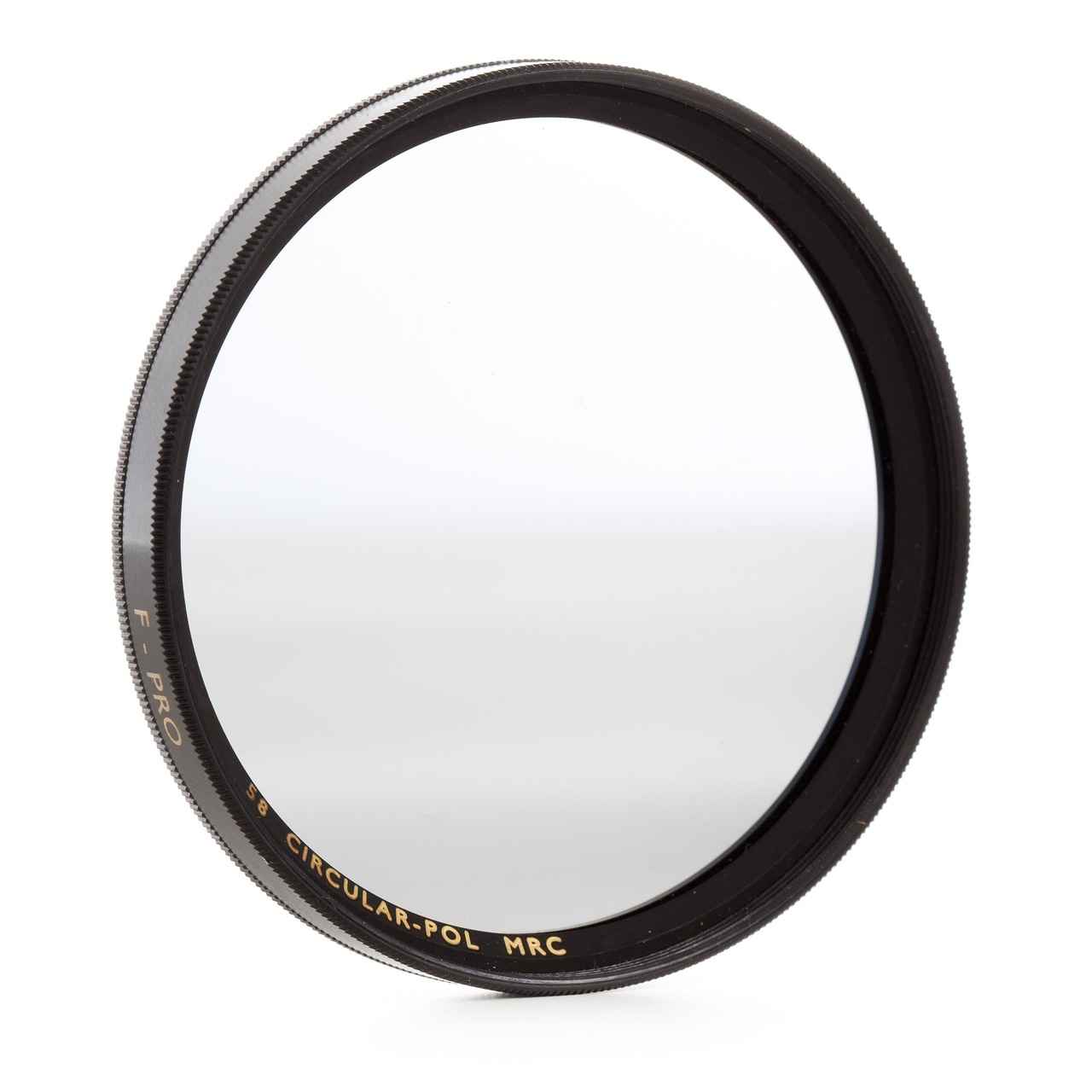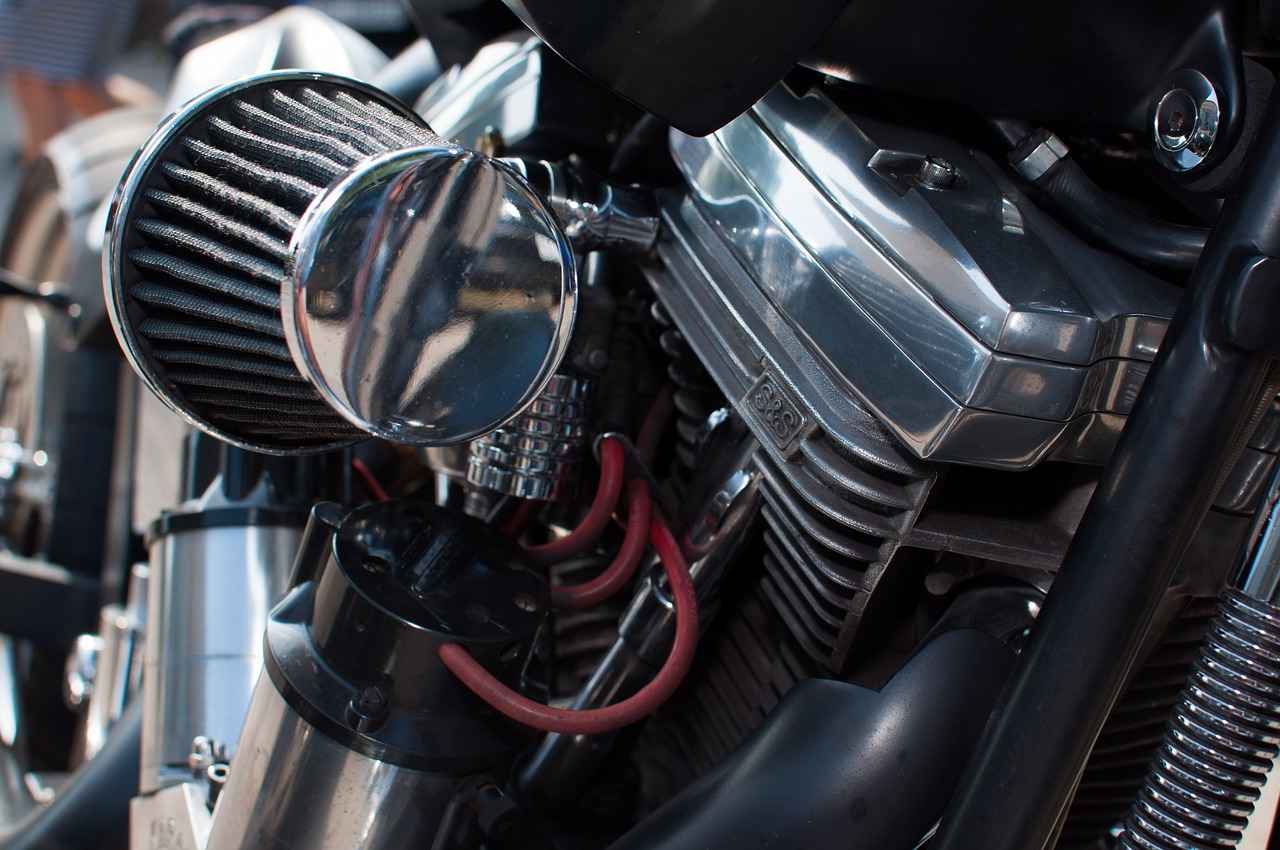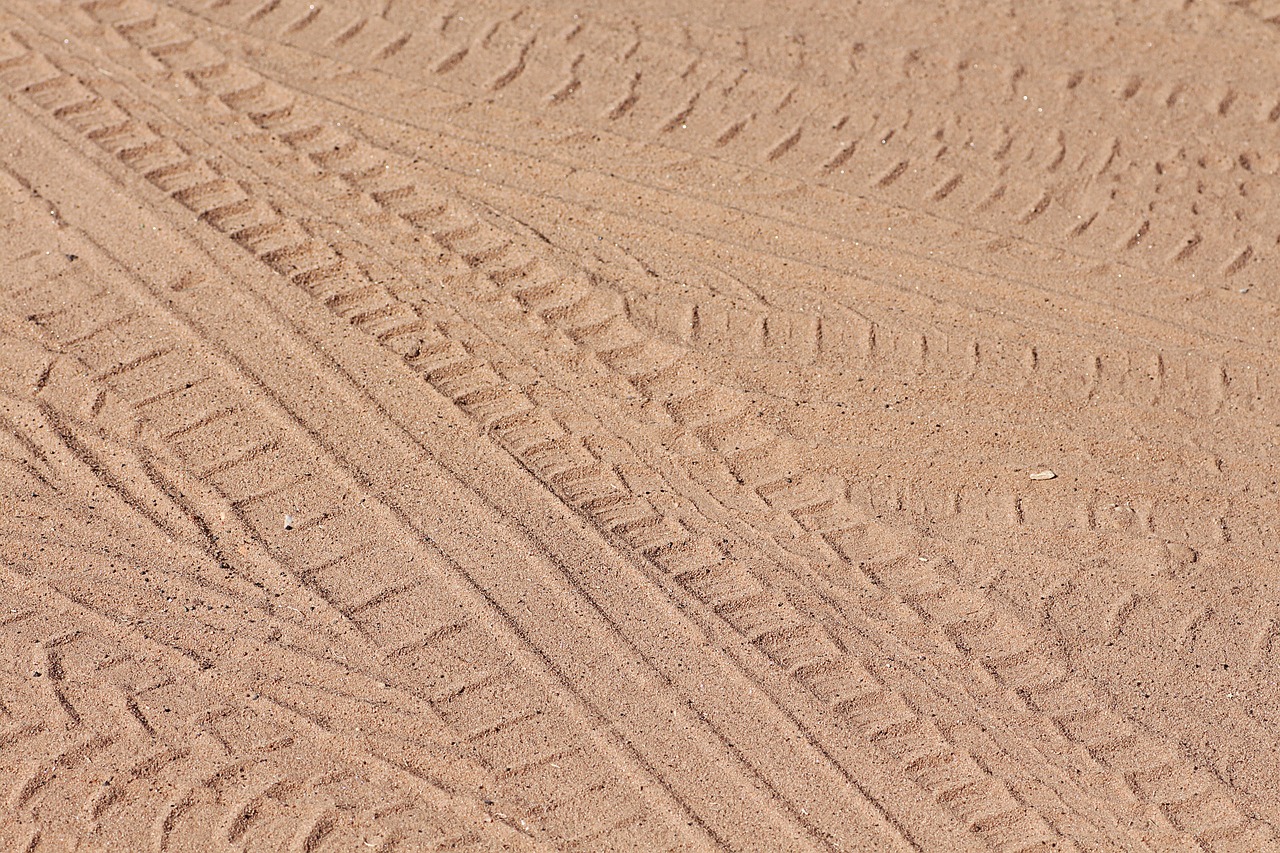This article provides a comprehensive, step-by-step guide on how to install a cabin air filter in a Honda Accord. This process is essential for ensuring clean air circulation and improving the overall performance of your vehicle.
A cabin air filter is a crucial component of your vehicle’s HVAC (heating, ventilation, and air conditioning) system. Its primary function is to filter out pollutants, dust, and allergens from the air that enters the cabin. This ensures that the air you breathe while driving is clean and free from harmful particles.
Regularly replacing your cabin air filter is vital for several reasons:
- Improved Air Quality: A clean filter traps dust and allergens, providing a healthier environment.
- Enhanced HVAC Efficiency: A clogged filter can restrict airflow, making your heating and cooling systems work harder.
- Odor Prevention: Old filters can harbor mold and bacteria, leading to unpleasant smells.
It’s generally recommended to replace your cabin air filter every 15,000 to 30,000 miles. However, if you frequently drive in dusty or polluted areas, you may need to replace it more often. Always consult your owner’s manual for specific guidance.
Before starting the installation process, gather the following tools:
- Flathead screwdriver
- New cabin air filter
- Gloves (optional, for cleanliness)
In most Honda Accord models, the cabin air filter is conveniently located behind the glove compartment. This design allows for easy access during maintenance.
Follow these steps to remove the old cabin air filter:
Start by emptying the glove compartment of its contents. Then, gently press in the sides to release it from its hinges. This will provide you with the necessary space to access the filter.
Once the glove compartment is out of the way, locate the filter cover. It is typically secured with clips or screws. Carefully remove the cover to expose the old filter.
After removing the old filter, it’s time to install the new one. Ensure that the new filter is oriented correctly, as indicated by the airflow direction on the filter itself.
Proper alignment of the new cabin air filter is crucial for effective filtration. Make sure the arrows on the filter match the airflow direction.
After placing the new filter, securely reattach the filter cover. Ensure that it is locked in place to prevent any air leaks that could compromise air quality.
Once the new cabin air filter is installed, turn on your HVAC system to test the airflow. Ensure that air is circulating properly and that there are no unusual noises or odors.
To ensure a successful installation, be mindful of these common mistakes:
- Avoid using excessive force when removing components.
- Ensure the filter is correctly oriented to maintain airflow efficiency.
Regular maintenance of your cabin air filter not only improves air quality but also enhances the overall efficiency of your vehicle’s HVAC systems. This contributes to a more comfortable driving experience and can even extend the life of your vehicle’s components.

What is a Cabin Air Filter?
Understanding the purpose of a cabin air filter is essential for every vehicle owner. This small yet significant component plays a crucial role in maintaining the air quality inside your car. The cabin air filter is designed to filter out dust, pollen, smoke, and other pollutants from the air that enters the vehicle’s interior through the heating, ventilation, and air conditioning (HVAC) system. By doing so, it helps to create a healthier environment for passengers, particularly those with allergies or respiratory conditions.
When you drive, your vehicle is exposed to various external contaminants. These can include road dust, exhaust fumes, and allergens that can infiltrate the cabin. A functioning cabin air filter traps these particles, ensuring that the air you breathe inside the car is cleaner and more comfortable. This is especially important during long drives or in areas with high pollution levels.
Moreover, a clean cabin air filter contributes to the overall efficiency of your vehicle’s HVAC system. When the filter is clogged or dirty, it can restrict airflow, making it harder for the system to circulate air. This can lead to increased energy consumption as the system works harder to maintain the desired temperature, ultimately affecting fuel efficiency. Regularly replacing the cabin air filter is a simple maintenance task that can enhance your vehicle’s performance and longevity.
How does a cabin air filter work? The filter typically consists of multiple layers of material designed to capture various sizes of particles. As air is drawn into the cabin, it passes through these layers, which trap contaminants and prevent them from entering the vehicle’s interior. This process not only improves air quality but also protects the HVAC system from debris that could cause damage or reduce efficiency.
In summary, understanding the role of a cabin air filter is vital for maintaining your vehicle’s air quality and overall performance. Regular maintenance and timely replacement of this component can lead to a more pleasant driving experience and contribute to your health and comfort on the road.
- Key Benefits of a Cabin Air Filter:
- Improves air quality inside the vehicle.
- Reduces allergens and irritants.
- Enhances HVAC system efficiency.
- Prevents unpleasant odors.
By recognizing the importance of a cabin air filter, you can take proactive steps to ensure that your vehicle remains a clean and comfortable space. Regular checks and replacements will not only benefit your health but also enhance the driving experience.

Why Replace Your Cabin Air Filter?
When it comes to maintaining your Honda Accord, one of the most crucial components to pay attention to is the cabin air filter. This often-overlooked part plays a significant role in ensuring that the air you breathe inside your vehicle is clean and free from harmful particles. In this section, we will delve into the reasons why replacing your cabin air filter should be a priority for every Honda Accord owner.
Neglecting to replace your cabin air filter can lead to a range of issues. Over time, the filter becomes clogged with dust, pollen, and other contaminants, which can severely impact air quality. This not only makes for an unpleasant driving experience but can also aggravate allergies and respiratory issues for passengers.
A clean cabin air filter significantly enhances the efficiency of your vehicle’s heating, ventilation, and air conditioning (HVAC) system. When the filter is clogged, the system has to work harder to pull air through, which can lead to increased fuel consumption and strain on the engine. By regularly replacing the filter, you ensure that the HVAC system operates smoothly and efficiently, providing you with optimal comfort.
- Reduced Airflow: If you notice that air is not flowing as strongly from the vents, it may be time to check the cabin air filter.
- Unpleasant Odors: A musty or foul smell can indicate that the filter is saturated with contaminants.
- Increased Allergies: If you or your passengers experience more allergy symptoms while driving, a dirty filter could be the culprit.
Replacing your cabin air filter on a regular basis comes with numerous benefits:
- Improved Air Quality: A new filter ensures that harmful pollutants are kept at bay, providing a healthier environment inside your vehicle.
- Enhanced Comfort: Clean air means a more pleasant driving experience, free from irritating odors and allergens.
- Increased HVAC Longevity: By reducing strain on the HVAC system, a new filter can help extend the lifespan of your vehicle’s heating and cooling components.
It is generally recommended to replace your cabin air filter every 15,000 to 30,000 miles, but this can vary based on driving conditions. If you frequently drive in dusty or polluted environments, more frequent replacements may be necessary. Always consult your vehicle’s owner manual for specific recommendations.
In conclusion, the importance of regularly replacing your cabin air filter cannot be overstated. By doing so, you maintain optimal air quality, enhance the efficiency of your HVAC system, and contribute to a more comfortable driving experience. Make it a part of your regular vehicle maintenance routine to ensure that you and your passengers enjoy clean, fresh air on every journey.

When Should You Replace the Cabin Air Filter?
Maintaining good air quality inside your vehicle is essential for a comfortable driving experience. One of the critical components that contribute to this is the cabin air filter. Understanding when to replace your cabin air filter can significantly enhance the air quality in your Honda Accord. This article explores the factors influencing the replacement schedule for your cabin air filter.
The cabin air filter is designed to trap dust, pollen, and other airborne particles, ensuring that the air you breathe inside your car is clean. Over time, these filters can become clogged, leading to several issues:
- Poor Air Quality: A dirty filter can allow pollutants to enter the cabin, affecting your health and comfort.
- Reduced HVAC Efficiency: A clogged filter can strain your heating and cooling systems, leading to decreased performance.
- Unpleasant Odors: Accumulated debris can cause musty smells, making your driving experience less enjoyable.
Knowing the right time to replace your cabin air filter can help prevent air quality issues. Generally, it is recommended to replace the cabin air filter every 15,000 to 30,000 miles. However, this range can vary based on several factors:
- Driving Conditions: If you frequently drive in urban areas with heavy traffic or on unpaved roads, you may need to replace the filter more often.
- Seasonal Changes: During pollen season or in areas with high pollution levels, consider checking the filter more regularly.
- Vehicle Usage: If you use your vehicle for long commutes or road trips, the filter may become clogged faster.
Besides adhering to the mileage recommendations, be observant for these signs that indicate it’s time to replace your cabin air filter:
- Decreased Airflow: If you notice a significant reduction in airflow from the HVAC system, it may be due to a clogged filter.
- Unpleasant Odors: A musty or unpleasant smell when the air conditioning is on could signal a dirty filter.
- Increased Allergies: If you or your passengers experience more allergy symptoms while driving, it may be time to change the filter.
Regularly checking your cabin air filter can help you determine its condition. Here’s how you can do it:
1. Open the glove compartment and remove any items inside.2. Gently push in the sides of the glove compartment to release it from its hinges.3. Locate the cabin air filter cover and remove it carefully.4. Inspect the filter for dirt and debris. If it appears dirty, it’s time for a replacement.
In conclusion, staying proactive about replacing your cabin air filter can help maintain a healthy driving environment in your Honda Accord. By following the guidelines mentioned above and paying attention to the signs of a clogged filter, you can ensure that you and your passengers breathe clean air while driving.

Tools Needed for Installation
When it comes to installing a cabin air filter in your Honda Accord, preparation is key. Before diving into the installation process, it’s essential to gather all the necessary tools and materials. This not only streamlines the process but also ensures that you have everything you need at your fingertips.
To successfully replace your cabin air filter, you will require a few basic tools. Here’s a list of essential items:
- Flathead Screwdriver: This tool is crucial for removing any screws or clips that may secure the filter cover in place.
- New Cabin Air Filter: Ensure you purchase the correct filter that is compatible with your Honda Accord model.
- Gloves: While not mandatory, wearing gloves can help keep your hands clean and prevent any oils or dirt from transferring to the new filter.
- Flashlight: A flashlight can be useful for illuminating dark areas, particularly when locating the filter behind the glove compartment.
- Vacuum Cleaner: Having a vacuum handy can help clean out any debris or dust accumulated in the glove compartment area.
Using the right tools for the job is vital for several reasons:
- Efficiency: Having all necessary tools on hand reduces the time spent searching for items, allowing for a smoother installation process.
- Prevention of Damage: Using the appropriate tools helps prevent damage to the glove compartment or filter housing, which can occur if incorrect tools are used.
- Safety: Proper tools reduce the risk of injury during the installation process, ensuring a safer experience overall.
Once you have gathered your tools, it’s time to prepare for the installation:
1. Park your vehicle on a flat surface and turn off the engine.2. Open the glove compartment and remove any items inside.3. If needed, consult your vehicle's manual for specific instructions related to your model.
By taking these preliminary steps, you’ll set yourself up for a successful cabin air filter installation. Remember, the goal is to ensure clean air circulation within your vehicle, which directly impacts your driving experience.
In summary, having the right tools at your disposal is crucial for the installation of a cabin air filter in your Honda Accord. By gathering a flathead screwdriver, a new cabin air filter, gloves, and additional helpful items, you can simplify the process and enhance your vehicle’s air quality. Proper preparation not only saves time but also contributes to a more efficient and safe installation experience.

How to Locate the Cabin Air Filter in Honda Accord?
Locating the cabin air filter in your Honda Accord is an essential first step in the installation process. This small but vital component plays a significant role in ensuring that the air you breathe inside your vehicle is clean and free from pollutants. Understanding where to find this filter can save you time and effort during maintenance.
In most Honda Accord models, the cabin air filter is conveniently located behind the glove compartment. This design provides easy access for both replacement and maintenance. To find it, you will need to open the glove compartment and follow a few straightforward steps.
- Empty the Glove Compartment: Begin by removing all items from your glove compartment. This will give you clear access to the compartment itself.
- Release the Glove Compartment: Gently push in the sides of the glove compartment to release it from its hinges. This action will allow you to lower the compartment fully.
- Locate the Filter Cover: Once the glove compartment is out of the way, look for the filter cover. It is typically a rectangular panel secured by clips or screws.
The location of the cabin air filter is crucial for several reasons. First, it allows for quick and easy access, making routine maintenance more manageable. Second, it ensures that you can replace the filter without needing specialized tools, which can be a hassle. Lastly, easy access encourages regular checks and replacements, which are vital for maintaining air quality inside your vehicle.
When you reach the filter cover, you may notice that it is designed for a snug fit. This design helps to prevent any dust and debris from entering the cabin air system. However, it also means that you might need to apply a bit of pressure to remove it. Be cautious not to use excessive force, as this can lead to damage.
Some Honda Accord owners may encounter challenges when trying to locate the cabin air filter. One common issue is not being aware of the filter’s exact position. Additionally, if the glove compartment is overloaded, it can be difficult to maneuver it out of the way. Always remember to check your vehicle’s manual for specific instructions related to your model year.
Finding the cabin air filter in your Honda Accord is a straightforward process that can significantly impact your driving experience. By ensuring that you know where to look and how to access it, you can maintain better air quality and enhance the overall performance of your vehicle’s HVAC system. Regular checks and timely replacements of the cabin air filter can lead to a more comfortable ride and a healthier environment inside your car.

Step-by-Step Guide to Remove the Old Cabin Air Filter
When it comes to maintaining your Honda Accord, one essential task is replacing the cabin air filter. This filter plays a vital role in ensuring that the air you breathe inside your vehicle is clean and free from allergens and pollutants. In this step-by-step guide, we will walk you through the process of removing the old cabin air filter, making it easy for you to improve your vehicle’s air quality.
Removing the old cabin air filter requires a few simple steps. Follow this guide to ensure a smooth and hassle-free experience:
- Gather Your Tools: Before you begin, make sure you have a flathead screwdriver and a new cabin air filter ready. Having these tools on hand will streamline the process.
- Open the Glove Compartment: Start by emptying the contents of your glove compartment. This will give you the space you need to work. Gently push in the sides of the glove compartment to release it from its hinges and allow it to drop down fully.
- Locate the Filter Cover: With the glove compartment out of the way, you will see the filter cover. This cover is typically secured by clips or screws. Take a moment to identify how it is attached.
- Remove the Filter Cover: Carefully detach the filter cover by either unscrewing it or unclipping it. Be gentle during this step to avoid breaking any clips. Once removed, set the cover aside.
- Extract the Old Filter: Now that you have access to the filter, gently pull it out. Take note of how it is positioned, as this will help you install the new filter correctly.
It’s important to handle the old filter with care, as it may contain dust and debris. Consider wearing gloves to keep your hands clean.
Understanding the importance of removing the old cabin air filter is crucial. A clogged or dirty filter can lead to reduced airflow, unpleasant odors, and even strain on your vehicle’s HVAC system. By regularly replacing the cabin air filter, you ensure a healthier environment inside your car and maintain the efficiency of your heating and cooling systems.
After successfully removing the old filter, it’s time to install the new one. Ensure that the new filter is oriented correctly, following the airflow direction indicated on the filter. This is vital for optimal performance.
- Insert the New Filter: Slide the new filter into the compartment, ensuring it fits snugly in place.
- Reattach the Filter Cover: Once the new filter is in, replace the filter cover by securing it with clips or screws.
- Close the Glove Compartment: Finally, lift the glove compartment back into place and push the sides to reattach it to its hinges.
By following these steps, you will have successfully removed the old cabin air filter and installed a new one, ensuring a cleaner and more comfortable driving experience.
Opening the Glove Compartment
When it comes to maintaining your Honda Accord, one crucial task is replacing the cabin air filter. This component ensures that the air circulating inside your vehicle is clean and free from dust, pollen, and other pollutants. In this section, we will delve into the process of , which is the first step to accessing the cabin air filter.
To access the cabin air filter, start by emptying the glove compartment of its contents. Remove any items such as registration papers, sunglasses, or miscellaneous items that may be stored inside. This will provide you with a clear workspace and prevent any items from falling out during the process.
Next, gently push in the sides of the glove compartment to release it from its hinges. This is typically a straightforward process; however, it’s essential to do this carefully to avoid damaging the compartment or its mounting points. Most Honda Accord models have a mechanism that allows the glove compartment to swing downwards once the sides are compressed. If you encounter resistance, double-check to ensure that no items are obstructing the compartment’s movement.
After successfully releasing the glove compartment, allow it to swing down fully. You should now have a clear view of the area behind it, where the cabin air filter is located. It’s important to note that some models may have a damper attached to the glove compartment, which controls its descent. If your model includes this feature, be sure to handle it gently to prevent any breakage.
Once the glove compartment is fully open, you can proceed to locate the filter cover. This cover is typically secured with clips or screws and will need to be removed to access the cabin air filter. Take a moment to inspect how the cover is attached, as understanding this will simplify the removal process.
In summary, is a simple yet essential step in the cabin air filter replacement process. By following these steps carefully, you will ensure that you can access the filter without any complications, allowing for a smoother and more efficient installation of your new cabin air filter. Proper maintenance of this component will significantly enhance the air quality within your Honda Accord, contributing to a more pleasant driving experience.
Removing the Filter Cover
When it comes to maintaining a clean and comfortable environment inside your Honda Accord, is a crucial step in the process of replacing the cabin air filter. This task, while straightforward, requires attention to detail to ensure that everything is done correctly. Below, we’ll guide you through the steps involved in this important phase.
Once you have successfully opened the glove compartment, the next step is to locate the filter cover. This cover is typically found directly behind the glove compartment and is designed to protect the cabin air filter from debris and contaminants.
- Identify the Fasteners: The filter cover is usually secured with either clips or screws. Carefully inspect the cover to determine which type is used in your specific model.
- Gather Your Tools: If screws are present, you will need a screwdriver to remove them. For clips, a gentle pull should suffice, but a flathead screwdriver can help pry them open if they are stubborn.
Follow these steps to ensure a smooth removal of the filter cover:
- Clear the Area: Before you begin, remove any items from the glove compartment to avoid any obstructions.
- Detach the Glove Compartment: Push in the sides of the glove compartment to release it from its hinges and allow it to drop down fully.
- Locate the Filter Cover: With the glove compartment out of the way, you should clearly see the filter cover. Take a moment to identify how it is secured.
- Remove the Fasteners: If your filter cover is held by screws, use your screwdriver to carefully unscrew them. For clips, gently pull or pry them away from the cover.
- Take Off the Cover: Once the fasteners are removed, gently lift the filter cover away from its position. Be cautious not to apply excessive force, as this could damage the cover or surrounding components.
After successfully removing the filter cover, you will gain access to the old cabin air filter. It is essential to inspect the filter for dirt and debris, as a clogged filter can significantly hinder air quality and HVAC performance.
- Check for Damage: Look for any signs of wear or damage on the filter cover and surrounding area. If you notice any issues, it may be wise to consult a professional.
- Prepare for Installation: Before installing the new cabin air filter, ensure that the area is clean and free from any debris that may have accumulated during the removal process.
In conclusion, removing the filter cover is a simple yet vital step in maintaining your Honda Accord’s cabin air quality. By following these steps, you can ensure that the process is completed efficiently and effectively, paving the way for a successful filter replacement.

Installing the New Cabin Air Filter
When it comes to maintaining a clean and comfortable environment inside your Honda Accord, installing a new cabin air filter is a crucial task. This process not only improves air quality but also enhances the efficiency of your vehicle’s heating and cooling systems. Below, we provide a detailed guide on how to properly install your new cabin air filter, ensuring optimal performance.
After successfully removing the old cabin air filter, the next step is to install the new one. This process requires careful attention to detail to ensure that everything is done correctly.
Before placing the new cabin air filter into its housing, it is essential to check the orientation. Most filters will have an arrow indicating the direction of airflow. This is crucial because installing the filter in the wrong direction can lead to reduced air quality and efficiency. Ensure the arrow on the filter points in the direction of the airflow, which is typically towards the back of the vehicle.
Once you have confirmed the correct orientation, gently slide the new cabin air filter into the designated slot. Make sure it fits snugly without forcing it into place. A proper fit is vital to prevent any gaps that could allow unfiltered air to enter the cabin.
After the new filter is in place, it’s time to reattach the filter cover. This cover is typically secured with clips or screws. Ensure that the cover is firmly in place to avoid any air leaks, which can compromise the effectiveness of the filter. Double-check that all clips are engaged and screws are tightened.
With the new cabin air filter installed and the cover secured, it’s important to perform some final checks. Close the glove compartment and ensure it operates smoothly. Then, turn on your vehicle’s HVAC system to test the airflow. Listen for any unusual noises and feel for adequate airflow coming from the vents. If everything seems normal, you have successfully completed the installation.
- Ignoring the Airflow Direction: Always ensure the filter is oriented correctly to maintain airflow efficiency.
- Forcing the Filter: If the filter doesn’t fit easily, double-check its orientation and alignment rather than forcing it into place.
- Neglecting the Cover: Always secure the filter cover properly to prevent air leaks.
Installing a new cabin air filter correctly can lead to numerous benefits:
- Improved Air Quality: A new filter effectively removes dust, pollen, and other pollutants from the air.
- Enhanced HVAC Efficiency: A clean filter allows the HVAC system to operate more efficiently, saving energy and reducing wear.
- Odor Elimination: Regularly changing the cabin air filter helps prevent unpleasant odors from circulating inside the vehicle.
By following these steps and avoiding common pitfalls, you can ensure that your new cabin air filter is installed correctly, contributing to a healthier and more comfortable driving experience.
Aligning the New Filter
When it comes to maintaining a vehicle, one of the essential components that often gets overlooked is the cabin air filter. This small yet significant part plays a crucial role in ensuring that the air you breathe inside your Honda Accord is clean and free from pollutants. One of the key steps in the installation process is the alignment of the new cabin air filter. Proper alignment is not just a suggestion; it is a necessity for effective filtration.
Proper alignment of the cabin air filter is vital for several reasons:
- Optimized Airflow: Aligning the filter according to the indicated airflow direction ensures that air flows through the filter efficiently. If the filter is installed incorrectly, it can obstruct airflow, leading to reduced performance of the HVAC system.
- Enhanced Filtration: The filter is designed to capture dust, pollen, and other allergens. When aligned correctly, it maximizes the surface area available for filtration, improving the overall air quality inside the vehicle.
- Prevention of Damage: An incorrectly installed filter can lead to increased strain on the HVAC system, potentially causing damage over time. This can result in costly repairs and reduced vehicle longevity.
To ensure that your new cabin air filter is aligned correctly, follow these simple steps:
1. Before installation, examine the new filter for markings that indicate the airflow direction.2. Position the filter so that the arrows or markings point in the same direction as the airflow in your vehicle.3. Insert the filter into the compartment gently, ensuring it fits snugly without forcing it.
When installing a cabin air filter, several common misalignments can occur:
- Inverted Installation: Installing the filter upside down can lead to airflow being blocked and ineffective filtration.
- Improper Fit: If the filter is not seated properly, it can create gaps that allow unfiltered air to enter the cabin, negating the benefits of replacement.
- Ignoring Directional Arrows: Failing to pay attention to the airflow arrows can result in a complete breakdown of the filtration process.
After installing the new cabin air filter, it’s crucial to test the alignment:
1. Turn on the HVAC system to the highest setting.2. Observe the airflow from the vents. It should be strong and consistent.3. Listen for any unusual noises that could indicate improper installation.
By ensuring that the cabin air filter is aligned correctly, you not only improve the air quality inside your Honda Accord but also extend the life of your vehicle’s HVAC system. Regular checks and replacements of the cabin air filter are essential for maintaining optimal performance and comfort.
Securing the Filter and Cover
After you have successfully placed the new cabin air filter in your Honda Accord, the next critical step is to securely reattach the filter cover. This step is essential to ensure that the filter remains in position and functions effectively. Here are some important points to consider:
- Check the Alignment: Before securing the cover, double-check that the new filter is properly aligned with the airflow direction indicated on the filter itself. This alignment is vital for optimal performance.
- Engage All Clips: If your filter cover is equipped with clips, make sure to engage all of them. A single unfastened clip can lead to air leaks, which may compromise the air quality inside your vehicle.
- Use Screws if Necessary: In some models, the filter cover may be secured with screws. Ensure that you have tightened these screws adequately, but avoid over-tightening, which could damage the cover.
- Inspect for Gaps: After reattaching the cover, inspect the edges for any visible gaps. A proper seal is necessary to prevent outside air, dust, and pollutants from entering the cabin.
Once you have confirmed that the filter cover is securely in place, it is advisable to conduct a quick check of the entire installation. This will help you identify any potential issues before they become significant problems.
Important Note:- An improperly secured filter cover can lead to air leaks, reducing the effectiveness of the cabin air filter and potentially allowing allergens and pollutants into the cabin.
After securing everything, it’s a good idea to turn on your vehicle’s HVAC system. Listen for any unusual noises and feel for proper airflow. This step is crucial, as it ensures that the air is circulating correctly through the newly installed filter.
In summary, securing the filter cover is a vital part of the cabin air filter installation process. By following these guidelines, you can ensure that your Honda Accord maintains a comfortable and healthy environment for you and your passengers.

Testing the Air Flow After Installation
After successfully installing the new cabin air filter in your Honda Accord, the next critical step is to test the air flow. This process ensures that the air is circulating properly and effectively throughout your vehicle. Proper air flow is essential not only for comfort but also for maintaining a healthy driving environment.
Testing the air flow is crucial because it verifies that the installation was successful and that the new filter is functioning as intended. A well-installed cabin air filter can significantly improve air quality inside your vehicle by filtering out dust, pollen, and other pollutants. If the air flow is weak or obstructed, it may indicate a problem that needs immediate attention.
- Start the HVAC System: Begin by turning on your vehicle and activating the HVAC system. Set it to the highest fan speed to ensure maximum air flow.
- Check for Air Flow: Place your hand in front of the air vents to feel the strength of the air coming through. A strong, steady flow indicates a successful installation.
- Listen for Unusual Noises: Pay attention to any strange sounds, such as whistling or rattling, which may suggest that the filter is not seated properly.
- Monitor Air Quality: After a few minutes of running the HVAC system, assess the air quality. You should notice a significant improvement in the freshness of the air.
If you find that the air flow is weak, there are several steps you can take:
- Recheck Installation: Turn off the HVAC system and carefully remove the filter cover. Ensure that the new cabin air filter is correctly aligned and seated.
- Inspect for Blockages: Look for any debris or blockages in the air intake area that might be obstructing air flow.
- Consult a Professional: If issues persist, it may be time to consult a professional mechanic to diagnose potential problems with the HVAC system.
Ensuring that your cabin air filter is functioning correctly and that air flow is optimal has numerous benefits:
- Improved Air Quality: A well-maintained cabin air filter helps keep the air inside your vehicle clean and free from allergens.
- Enhanced HVAC Efficiency: Proper air flow allows the heating and cooling systems to operate more efficiently, saving energy and reducing wear on components.
- Increased Comfort: A well-functioning HVAC system keeps the cabin at a comfortable temperature, enhancing your overall driving experience.
In summary, testing the air flow after installing a new cabin air filter is an essential step that should not be overlooked. By following the outlined steps and understanding the importance of proper air circulation, you can ensure a comfortable and healthy environment in your Honda Accord.

Common Mistakes to Avoid During Installation
When it comes to installing a cabin air filter in your Honda Accord, being aware of common mistakes can significantly enhance the success of your installation. Avoiding these pitfalls not only saves time but also ensures that your vehicle’s air quality remains optimal.
Understanding the importance of proper installation is crucial. A well-installed cabin air filter can enhance air quality, improve HVAC performance, and prevent unnecessary repairs. Here are some common mistakes to watch out for:
- Using Excessive Force: One of the most frequent errors is applying too much force when removing components. This can lead to broken clips or damaged parts, which may complicate the installation process.
- Incorrect Filter Orientation: Ensuring the filter is oriented correctly is vital. Many filters come with arrows indicating the direction of airflow. Installing the filter backward can lead to poor filtration and reduced air quality.
- Neglecting to Clean the Area: Before installing the new cabin air filter, it’s essential to clean the area where the filter sits. Dust and debris can accumulate, which may hinder the performance of the new filter.
- Not Checking for Damages: Always inspect the old filter and the surrounding area for any signs of damage or wear. Failing to do so can result in recurring issues even after a new filter installation.
- Skipping the Testing Phase: After installation, it’s crucial to test the airflow. Failing to do this can leave you unaware of any issues that may have arisen during the installation process.
To facilitate a smooth installation, follow these practical tips:
- Read the Manual: Always refer to your vehicle’s manual for specific instructions related to your model. This will help you understand the exact steps needed for a successful installation.
- Gather Necessary Tools: Ensure you have all required tools, such as a flathead screwdriver and gloves, ready before starting. This preparation reduces the likelihood of distractions during the process.
- Work in a Well-Lit Area: Adequate lighting can help you see small components and avoid mistakes that might occur in poorly lit conditions.
- Take Your Time: Rushing through the installation can lead to errors. Take your time to ensure each step is done correctly.
Proper installation of your cabin air filter not only enhances air quality but also contributes to the longevity of your vehicle’s HVAC system. A correctly installed filter can:
- Improve Air Quality: By filtering out pollutants and allergens, a new cabin air filter ensures that you breathe cleaner air inside your vehicle.
- Enhance HVAC Efficiency: A clean filter allows your heating and cooling systems to operate more effectively, which can save on fuel costs and reduce wear on the system.
- Prevent Unpleasant Odors: A well-maintained cabin air filter helps eliminate musty smells from the air conditioning system, creating a more pleasant driving experience.
By being mindful of these common mistakes and following the outlined tips, you can ensure a successful cabin air filter installation in your Honda Accord. This not only contributes to a better driving experience but also promotes the health and safety of all passengers.

Benefits of Regular Cabin Air Filter Maintenance
Maintaining your vehicle’s cabin air filter is a crucial aspect of car care that often goes overlooked. The extend beyond just cleaner air; they significantly enhance the performance of your vehicle’s heating and cooling systems. This article delves into the various advantages of keeping your cabin air filter in top condition.
The cabin air filter serves as a barrier against pollutants, dust, and allergens that can infiltrate your vehicle’s interior. Regular maintenance ensures that this filter functions effectively, leading to a healthier driving environment. A clean cabin air filter can help in:
- Improving Air Quality: A clean filter traps harmful particles, preventing them from entering the cabin. This is especially beneficial for individuals with allergies or respiratory issues.
- Enhancing HVAC Efficiency: A clogged filter forces your heating and cooling systems to work harder, which can lead to increased fuel consumption and wear on components.
- Reducing Odors: Old filters can harbor bacteria and mold, leading to unpleasant smells. Regular replacement eliminates these odors and keeps the air fresh.
Experts recommend replacing your cabin air filter every 15,000 to 30,000 miles, but this can vary based on driving conditions. If you frequently drive in urban areas with heavy traffic or in regions with high pollen counts, you may need to replace it more often. Monitoring the filter’s condition is key to maintaining optimal air quality.
Being aware of the signs that indicate a need for filter replacement can save you from potential issues:
- Decreased Airflow: If you notice reduced airflow from your HVAC system, it could be a sign that the filter is clogged.
- Unpleasant Smells: A musty or foul odor when the air conditioning is on can indicate mold growth on the filter.
- Increased Dust Accumulation: If you find dust settling quickly inside your vehicle, it may be due to a failing cabin air filter.
Comfort during your drive is paramount, and a clean cabin air filter plays a significant role in achieving this. When the filter is clean, the HVAC system can maintain a consistent temperature, ensuring that you feel comfortable regardless of outside conditions. Additionally, it helps in minimizing noise from the HVAC system, which can be distracting during your drive.
Yes! While there is a small cost associated with replacing the cabin air filter, the long-term savings can be significant. By ensuring that your HVAC system operates efficiently, you can reduce fuel consumption and avoid costly repairs that may arise from neglected maintenance.
In summary, the are clear. From improving air quality and enhancing HVAC efficiency to contributing to overall comfort and potentially saving money, it is an essential aspect of vehicle upkeep. Prioritizing this maintenance will lead to a more enjoyable and healthier driving experience.
Frequently Asked Questions
- How often should I replace my cabin air filter?
It’s generally recommended to replace your cabin air filter every 15,000 to 30,000 miles. However, if you frequently drive in dusty or polluted areas, consider changing it more often to maintain optimal air quality.
- What tools do I need to install a cabin air filter in my Honda Accord?
You will need a flathead screwdriver, a new cabin air filter, and possibly a pair of gloves for cleanliness. Having these tools ready will make the installation process smooth and hassle-free!
- Can I install the cabin air filter myself?
Absolutely! Installing a cabin air filter is a simple DIY task that you can do in less than an hour. Just follow the step-by-step guide, and you’ll have clean air circulating in no time!
- What happens if I don’t replace my cabin air filter?
If you neglect to replace your cabin air filter, you might experience poor air quality, unpleasant odors, and decreased efficiency of your vehicle’s HVAC system. It’s like trying to breathe through a dirty mask!
- Where can I find the cabin air filter in my Honda Accord?
In most Honda Accord models, the cabin air filter is conveniently located behind the glove compartment. Just pop it open, and you’ll be on your way to replacing that filter!



